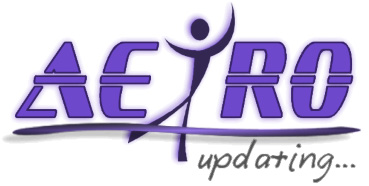Jammu and Kashmir Services Selection Board has advertised various Posts via Notifications 01, 02, 03, 04 and 05 of 2019. Syllabus for the Post of Junior Staff Nurse is given as Under:
-
- Anatomy and Physiology
ü General:
Introduction to the Human body. Terms used in Anatomy, (Surface anatomy, markings and locations of different body parts and important body planes.Planes and Regions of Thoracic, Abdominal and pelvic Cavities.
ü Animal Cell :
Structure of cell, function and cell divisions.
ü Tissue System:
Definition, structure & S function of epithelium, connective, Muscular, Fluid and nervous tissues.
ü Cardiovascular System.
Heart, pericardium, Arterial system, Venous system, Capilary, systemic circulation.
ü Digestive System:
Mouth , oesophagus, stomach, small intestine, large intestine, spleen, liver, Salivary Gland , Gall Bladder, pancreas, Physiology and Digestion Absorption and Assimilation of Food.
ü Respiratory System:
Noise , pharynx, larynx, trachea, Bronchi, lungs, pleura, physiology of Respiration-Expiration and Ins;piration, Internal and External Respiration, Breathing control, vital capacity . Tidal volume and Dead space.
ü Reproductive system:
- Male Reproductive system: Male Reprodutive organs,
- Spermatogenesis, Testosterone and Secondary sexual
Female Reproductive System: Vulva, internal reproductive organs menstrual cycle, ovarian hormones & Female breast.
ü Excretory System:
Introduction to Excretory body organs, structure of kidneys , ureters, Urinary, Bladder, Urethra, Physiology of filteration Reabsorption and secretion.
ü Nervous System:
Brain Meninges , ventricles spinal cord nerves and cerobro spinal fluids.
ü Lymphatic System:
Lymph Glands, Thoracic Ducts. Composition & Circulation of Lymph.
ü Endocrine system –
Definition, Pituitary Gland, Pineal gland.Thymus Gland Adreneal Glands Thyroid, Parathyroid Glands.
ü Sense Organs-
Structure and function of Eye , Skin , Ear and Tongue.
ü Musculoskeletal System-
Skull, vertebral column, shoulder girdle, Thoracic cage. Bones upper limbs, Bones of lower limbs, type of bony joints and movements.
Ø General Physics
Unit, Measurements, Motion, Newton’s Law of Gravitation Work energy, Properties of matter & Archimedics principle.
ü Heat –
Thermometry & Kinetic Molecular Picture of Heat, Thermal Expansion Transference of heat, heat energics, Calorimeter and hygrometery Practical points of heat in X-Ray equipment.
ü Light –
Rectilinear propogation, Photometery reflection lawas. Spectroscope optical instruments, velocity of Light X-Ray spectroscope.
ü Magnetism –
Properties of Magnetism, Molecular Theory of Magnetism, magnetic field, Lines of Force, Magnetic forces and Territorial magnetism, Hysteresis.
ü Electricity –
Simple electronic phenomenon, potential difference and electric current capacitor of condenser inductance, impedence, Electro magnetism resistance heating and chemical effect of current, electromagnetic induction, Laws, Ohm’s law, Safety fuses Galvanometer, AC and DC currents, RMS value, Peak value.
ü Sound –
Production of sound, wave motion, velocity of sound, Superimposition of sound musical sounds, vibration of strings, Air Columns etc. Production ultrasonic waves, Clinical application of ultra sound.
ü Transformers
Principles construction of step up & down and Auto transformers, construction of high tension
.Transformers rectification . Self rectification.
ü X-Ray
Production of x-ray, properties, interaction with matter (Photo electric comption effect and pair production) luminescent effect, photographc effect, ionizing effect & biological effects.
ü Units and Measurements of X-Rays-
Lonixation, Roentigen, Rad Rem, R.B.E. Radiaton badges, lionization chambers.
Ø X -Ray Tube –
- Construction of x-ray tube Targets, cooling and insulation, X-Ray Circuits , timers and rectifiers in x-ray, circuits, inter locking circuits, stationary and Ratatory anode
- Quantity and Quality x-ray , H.V.T or VVL linear absorption co-efficient grids, cones cylinders, filters, focal spot size LBD FFD or LSD and OFD Fluoroscopy and Image intensifier
ü Radioactivity :-
- Curie, Half life period, decay factor, radium, cobalt, caesium, dose. Dose rate exposure dose, Exit dose, Depth dose, isotopes and isobars, isodose charts and their
- Gamma of X-Ray film (toe & shoulder region linear and Solarization) X-Ray tube calibration, sensitometer,
ü Musculoskeletal System :-
- Skull, vertebral column, Shoulder girdle, Thoracic cage. Bones upper limbs, Bones of lower limbs, Types of bony joints and
Ø Radiographic photography Technique (Dark room Techniques)
ü Dark Room-
- Definition and location of dark room, ideal design of dark room , light and radiation protection devices , safe light test, ventilation, dry and wet benches,
ü Radiographic Films-
- Ortho-chromatic films , panchromatic films, Base, Bonding layer, emulsion and super coating of Non screen films CTA base and polyster base films. The structure of Double coated & single coated film.
ü X-Ray Cassettes –
- Construction of various cassettes, cassettes care, mounting of intensifying screen in
ü Intensifying screens-
- Luminescence (Phosphores cence and fluorescence) construction of screens. Type of phosphors and pigments film screen contact, speed of screens-slow parfast care of intensifying screens . Intensification factors numeral proof and rare earth
- Mounting of intensifying
- Screen film
ü Film Processing –
Auto processing material for processing equipment and annual processing control on temperature chemical in Dark room the PH Scale.
- X-ray Developer
- X-Ray Fixer
- Film Rinsisng Washing & Drying
- Preparation of processing chemicals, loading and unloading of cassettes,
ü Presentation of Radiograph-
- Film identification- Direct or Stereoscopic views, trimming legends, record filling and report distribution..
ü Film Artifacts-
- Definition, type an causes of radiation and photographic artifacts, factors affecting the quality control of
· Radiograpghic General Procedures
o Intorduction- The Radiographic image (image formation, magnification image Distortion, Image, sharpness, Image contrast) Ex posure factor and Anatomical Terminology.
ü Skeletal System-
Upper Limb- Procedure for thumb, fingers, meta carpals, hand corpometacarpel joints, wrist joint, carpo-radio-ulpar joint, forearm, elbow joint, arm, special views for scaphoid bone, olecranon process , supra condylar prljection in various type ofinjured patients.
- Lower limb- Procedure for toes, meta tarsalls, complete foot, trasoancaneal, talo calcaneal joint, lege with ankle joint legewith knee jointm knee joint, thigh with hip
- Shoulder Girdle and Bony thorax- Procedures for scapula calvicle and head of humerus sternoclavicular joint , special views for Head of humerus and scapula in various types of injured or dislocation cases.
- Vertebral Column- Normal curvature relative levels of vertebrae, procedures for atlanto- occipital joint, odontoid process, cervical spine , cervicodorsal spine , dorsalsspine, dorso- lumbar spine, and
- Pelvic Girdle and Hip Joints : – Procedure for whole pelvis, ileum, ischium and public bones, sacro – iliacjoint symphysis pubis, acetabulum, neck of femur greater & lesser trochanter. Hip Joint with upper one third femur, special view for S.M. pinning and S.P. nailing and platting.
- Skull :- Procedure for whole skull, localized for frontal occipital, temporal, external and internal auditory meatus, sella turcica, juglar foramen, for a magnum, optic foramen maxillae zygomatic bones, mandible, temporo-mandibular joints, styloids processes, cranio-vertebral
- Teeth :- National and International formulae and T and P.T. Procedures for maxillary and mandibular teeth (incisors canine, premolar and molar) for D.T and P.T cephalometery, orthopantogram, occulusal view for maxilla and mandible.
ü Chest-
- Procedures for chest at six feet, lying down and crect positions, inspiration and expiration views , special views like lordotic , decubitus, MMR portable teleradiography, chest in pregnancy. High Kilovolatage technique.
ü Abdominal Pelvis –
- Preparation for procedure, procedure for upper abdomen,lower abdomen,KUB Gallbladder Stomach , small intestina and large intestine in Supine and erect position, special views in case of perforation etc supine and erect position, special views in case of performation
ü Sinus –
- Procedures for paranasalsinuse (frontal, ethmoid,sphenoid and maxillary )
ü Soft Tissue Radiography-
- Procedures for STM , STN abdomen and other body organs. invetogram procedures, manipulation of positions, immobilization , exposure, FFD in abnormal conditions of
ü Hospital Practice and Care of Patients :-
- Setup of Radiology department in Hospital, Hospital staffing and organization, Patients Registration, record filling, cases put up and dispatch devices, medico legal aspect of profession. Professional relationship of Radiographer with patient and organization staff.
- Special Investigation
ü Urinary Tract –
- Plain Radiographs for UB Intravenous Pyelegraph, (IVP or IVU) Retrogratepyelegraphy, Micturting- cystourethrogram Retrograte
ü Gastro –Intestinal Tract –
- Plain Radiographs, abdomen, Barium Swallow, Ba meal ET, Ba Enema, double contract Baenema and instant Baenema, Miscellaneous Procedures, Gastrigraffim study, fluoroscopy,
· Biliary Tract
ü
- Introduction to biliary contrast oral choleystography (OCG) pancreatograpy (ERCP), HCG, Fistulogram
- Basic principle and application of computerized tomography, ultrasound Magnetic resonance Imaging, Computer Radiography and Digital
- Contrast Agents, Contrast Reaction and their management, Emergency Drugs used in Radiology
Ø Ardiological special procedures and radiotherapy
- Introduction- Importance of special procedure, parameters for a special procedure (indication, contraindication, patient preparation, accessories, contrast media, technique aftercare
- Ideal step of different special procedure Laboratories (Cath-lab, Angiolab, U/S Lab. C.T. Center & M.R.I Centers) Accessories of a special procedure
- Contrast and different contrast media for various procedure, Adverse effects of contrast media.
- Handling of emergencies in Radiology deptt. Preparation of different contrast media. Uses of Drugs and other equipment in procedure roo. Checking of Instrument, drugs and their labellings knowledge of sterile and unsterile
ü Cardio-Vascular System –
Plain Radiographs of Interested – Body part catherization technique guidewires, Catheters, General complication of catheter technique.
- Gngiography peripheral Angiograms – Angiogram for upper and lower limbs
- Central Angiogram :– Cardiac catherization, Carohd Angiogram, Aotogram, Selective angiogram, Digital substmction
- Venography : Plain Radographs of interested body
Peripheral Venography : Venography of upper and lower limbs. Intraosseous venography
Central Venography : – Portal venography, Superior venacavography, Inferior Venacavography Retrograde selective Venography.
- Central Nervous System – Introduction to water soluble contrast & Oily contrast for
C.N. System. Plain Radiographs of skull or vertebral column, ventriculography, Pneumo encephalography, Shuntography, Myelegraphy, cisternography.
- Respiratory Tract – Plain radiographs of Face, Neck or Thorax Nasopharyngography Oropharyngography, Laryngography, Lung
- Reproductive System : – Plain Radiographs of interested body part Vesiculography Hystero Salpingography,
- Skeletal System :- Plain Radiographs of interested bones, Arthrography (wrist, knee , Shoulder, Hip elbow, ankle joints ) Fistulography and
Basic Principle and application of tomography computerized Tomography Ultrasound, Magnetic resonance Imaging. Manula Substruction & Duplicating techniques.
- Radiotherapy :- Physical Principles of Radio Therapy general Pathology in Relation to Radiation Therapy Radiation Treatment & Types of Sources, cobalt Calcium and Radium. Radiotherapy its advantages & Disadvantages Radio therapy Tubes, Radiotherapy Techniques for skin, respiratory, Digestive Urinary, Reproductive, Endocrine and Nervous diseases, Kilovoltage techniques, External & Internal Radiation technique in various diseases. Plesiotherapy Dose data, uses of isodose chart for correction of isodose curve. Basic Principles of CT & MRI and
Ø Medical OPD / Emergency / Ward Tray with Physician.
ü Electrocardiography & Techniques –
- Definition of ECG, Introduction to Electro Cardiography. History Physiological basic, Vector concept in ECG, Conduction velocity, Impulse generation, Impulse Transmission, Normal cardiacrhythum, Blood pressure, Pulse rate, Central Terminal of Wilson, Unipolar limb leads, Biopolar limb leads, Augmentation, Esophaheal leads, Jelly used in ECG different colour codes in ECG leads.
ü Normal Electrocardiograms –
- Normal paper speed, standardization, Calibration, Filters, Normal heart position, Interpretation of ECG. Atrial complexex (p-wave), P-R interval, QRS complex, QT Interval, ST segment, T-Wave, Purkinjee fibres repolarization. Duration and amplitude of different normal waves recorded in an ECG. No. of complexes tobe recorded in a normal ECG.
ü Abnormal Electrocardiogram –
- Abnormal P-wave, Interventicular conduction defect, RBBB (Right bundle Branch Block) LBB (Left Bundle Branch Block). Hypertrophy, RVH (Right Ventricular Hypertrophy, LVH (Left Venticular Hypertrophy), WPH (Wolf Parkinson white Syndrome.) Bilateral Bundle Branch Book. Trifasicuair Blocks. Lown-Ganong Levine-Syndrome, Mahim by pass, Pulmonary embolism. Chronic Obstruction. Mitral Lung disease (COPD). Biventricular Hypertrophy, Myocardial infarction Mitral Stenosis. Mitral valve prolapsed, Paroxy small Atrial Tachycardia. Sick-Sinus-Syndrome, Supra Ventricular Left Posterior and anterior hemi block.
ü Coronary Artery Disease –
- Ischemia, Injury, Infarction, Subtle, Atypical, Non-specific patterns. Condition defects and infarctions, Location of infarctions, ventricular premature beat and acute infarctions, coronary insufficiency. Atherosclerosis Thrombo
ü Drugs and Electrolytes –
- Adrenaline, Acetyl choline, Digitalis, Quinidine, Potassium, Hyperkalemia and Hypokalemaia, Hyper and Hypo Phenothiazines. Anthro Cyclines, Cerebro
Vascular Accidents (CVA). Hypo and hyper Thermia, pericarditis, Myocarditis. Heart trauma. Pericardial effusion. Malignancy of heart. Cardiomyopathies, Electrical Alternans, Negative V-Wave, Liquid Protein diet Anaemia etc.
ü Exercise Test –
- Definition, Acetyl Choline, Digitalis, Quinidine, Potassium. Hyperkalemia and Hypokalemala, Hyper and Hypo Phenothiazines. Anthro Cyclines, Cerebro Vascular Accidents (CVA), Hypo and Hyper thermia, pericarditis, Myucarditis. Heart Trauma. Pericardial effusion. Malignancy of heart. Cardionyopathies, Electrical Alternans, Negative V-Wave, Liquid Protein diet Anaemia Etc.
ü Disorders of Cardiac Rhythum –
- Disbalance of impulse formation at SA node, disturbance of impulse conduction, Secondary disorders of rhythum, Physiology of cardia rhythum, automaticity. A Vnode, Sinus rhythum, Sinus tachycardia, Sinus brady cardia, Sinus Arrythmia, Sinoatrial block, partial SA block, complete SA block, causes of exit block, Atrial Extrasystoles, Bocked Atrial extrasystole, Wandering Pacemaker, Praroxysmal Atrial tachycardia (PAT) Chaotic atrial rthythm, Atrial Flutter, Atrial Fibrillation, Supraventricular tachycardia (SVT.) Ventricular tachycardia (VT) Ventricular fibrillation. Sick sines syndrome
ü ECG as a Clue to Clinical Diagnosis –
Pulmonary Stenosis, tricuspid atresia, Atrial septal defect, Ventricular septal defect, Ebstein Anomaly, Corected Transposition of great vessels, Mirror image dextrocardia, Anomalous Origin of left coronary Artery, Rheumatic Heart Disease (RHD), Mitral valve prolapsed, Athelete’s Heart, cardia Pacemaker etc.
[button color=”orange” size=”medium” link=”https://www.aeiro.com/wp-content/uploads/2019/03/3_22_2019.pdf” icon=”fa-file-pdf-” target=”true”]Click Here to Download the Syllabus in PDF[/button]




